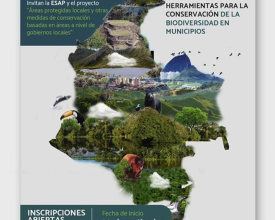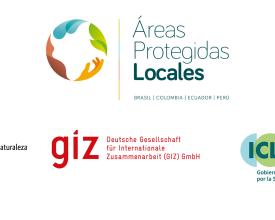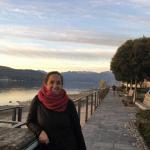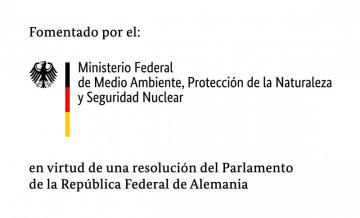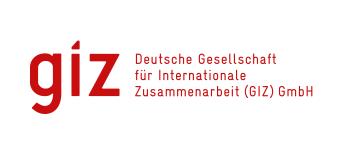
E-learning as a biodiversity management strategy for local governments
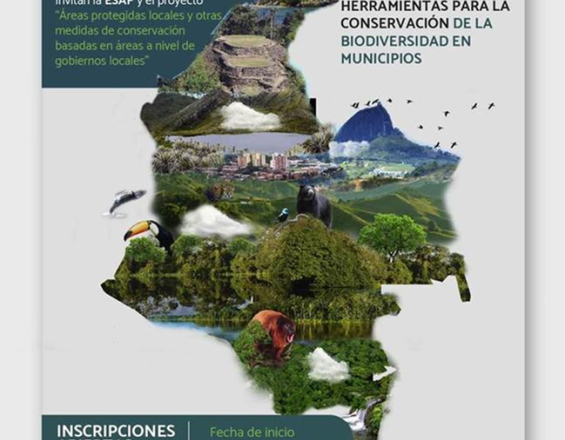
This solution integrates biodiversity management at the municipal level and virtual education, so that local actors and their municipal administrations know the skills and tools they have to be great allies in the care of biodiversity in their territories.
The care of biodiversity is a task of all the inhabitants of a territory. Administrations in particular have an important role to play in this task, but do they know how to do it? Do they know the strategies they can apply? Indeed, these questions motivated ten (10) entities to design and implement in Colombia the virtual course "biodiversity conservation tools in municipalities".
Context
Challenges addressed
This solution responds to existing shortcomings in terms of how to effectively manage the biodiversity of their territories. This is due to the fact that the National System of Protected Areas does not contemplate those areas managed by municipalities. It is precisely in the municipal sphere where the relationship between humans and nature is closer and potentially generates tensions, altering ecosystems and limiting their functioning. As state structures closest to territorial processes, municipal administrations play a key role in biodiversity conservation management. Following legal obligations, or by will, the municipalities define conservation areas (virgin or transformed natural spaces) in their territories together with different actors.
The environmental issue in general, as well as biodiversity conservation, requires capacity building and support to generate greater ownership in the vast majority of local governments.
Location
Process
Summary of the process
In order to achieve an adequate understanding of the roles and competencies of local governments, it is essential to have educational materials and resources that, through clear and simple language and a virtual education platform, provide local governments with the key concepts and tools for biodiversity management in their municipalities.
Colombia has a series of tools that contribute to the management of conservation areas. The various obligations of the municipalities in this area show the need to strengthen their knowledge in land use planning, under principles of sustainability and sustainability. With this emphasis, the course compiles and explains the tools that facilitate the analysis within the framework of environmental competencies, which supports the creation of conservation areas and the management of biodiversity in the territory, emphasizing the processes of territorial planning and management, as well as municipal environmental management.
Building Blocks
Education as a tool for conservation
For the development of the virtual course, teaching and learning objectives were proposed and provided through two units: one on basic concepts and the other on practical tools for conservation. This process provided basic elements for understanding the relationship between biodiversity and the reality of the territories, as well as the identification of tools that facilitate the management of conservation areas by municipal representatives.
The participants developed the course over a period of one month, with an hourly intensity of 24 hours on the platform of the Escuela Superior de Administración Pública -ESAP- which uses a Moodle format.
Enabling factors
- Achieving a virtual course built jointly with ten institutions and in partnership with the Escuela Superior de Administración Pública-ESAP-, this participatory process facilitated the success of the course.
- The course certificate issued by ESAP gives points on the resume (i.e. incentive or stimulus) to people working in public administration.
- The dissemination of the call for the course was made through the networks of several institutions, which allowed a wide dissemination and the enrollment of 2100 people.
Lesson learned
In the implementation of the course, some lessons learned were identified, such as:
- Having a joint work strategy
- Working under a vision of coordinated action
- It is necessary to have the support of a group of professionals, experts in the different topics: pedagogue, proofreader and visualizer to transmit complex concepts, often new or unfamiliar to local governments.
Local government tools for local management of protected areas
In order to manage biodiversity at the municipal level, stakeholders and local governments need to have a clear understanding of their roles and competencies, as well as the tools that enable them to do so. For example, the tool for creating municipal systems of protected areas allows the municipality to consolidate the management of conservation areas, the actors involved in these processes, have more information about their territory and in many cases include the areas in land use planning. These systems are a platform that guarantees the participation and social appropriation of the municipality's inhabitants.
Enabling factors
- Understanding of the application of conservation regulations that enable municipalities' competencies for biodiversity management.
- Compilation of biodiversity management tools and general information on those that can be applied by local governments.
- Support from institutions with experience in the effective management of conservation areas.
Lesson learned
- It is important to be clear about the scope of action of conservation tools and which ones are within the range of action of local governments.
- Keep in mind that biodiversity management is a task carried out by governments in cooperation and articulation with other actors at the municipal, regional and national levels.
Impacts
The course was opened to the public in September 2019 and 887 students from municipal governments, technicians from environmental and planning secretariats, officials from the Ministry of Environment and Sustainable Development, governors' offices, regional and urban environmental authorities, research institutes, non-governmental organizations, community action boards, communities and academia were certified.
The participatory process was a key element for the structuring of the course, from the elaboration of contents, the pedagogical design, the construction of didactic resources, the moments of reflection of knowledge and the final feedback.
The course forums and WhatsApp groups created by the course monitors generated contact networks among the participants, which are active to date.
Ten (10) national and regional institutions joined efforts and developed capacities in the design and implementation of virtual courses, to which people from all regions of the country have access.
Strengthening the capacities of the Escuela Superior de Administración Pública, which is a leader in the training of public entities, this being a pedagogical resource on the subject of biodiversity conservation and management, which they did not have before.
Beneficiaries
Local governments, education centers, NGOs, civil society, other actors at the municipal level, the community, who are the beneficiaries of the actions that local governments and other actors carry out in the territory.
Sustainable Development Goals
Story
John Jairo Arias, an official of the Secretary of Environment of the municipality of Envigado, has been part of this work, which is why he was motivated to take this course sent by his colleagues through a whatsapp group.
For John Jairo, the basic tools presented in the course have given him elements to develop his functions, such as the monitoring of ecosystems, allowing him to conceptualize more broadly and have greater clarity of the landscape of the territory, learn from observation and be able to observe every day the contributions that can be made from a defined ecological structure, with proper management of the system.
In addition, it has allowed him to compare from the academic point of view, what is being done in practice in this municipality located in the Aburra Valley, in the metropolitan area of Colombia. John Jairo emphasizes that "I liked the characterization from the social side, we have worked very little on this issue, it is very difficult to articulate the work with the communities. This is a good aspect to approach and get more activity with the community. We have a work table for a wetland, to show the benefits of nature and that people participate more in the local system."
Finally, a key element of the course was to expose and exchange experiences with colleagues through a methodology that allowed to have spaces for dialogue.
The course was very good!

